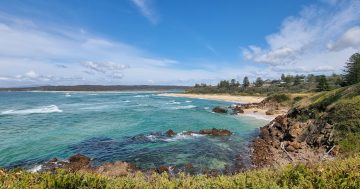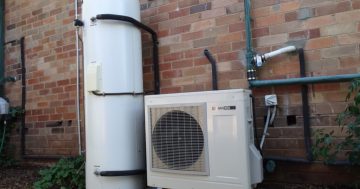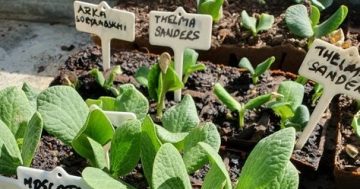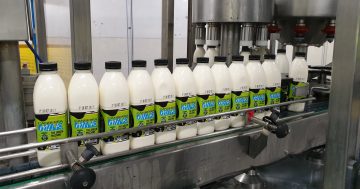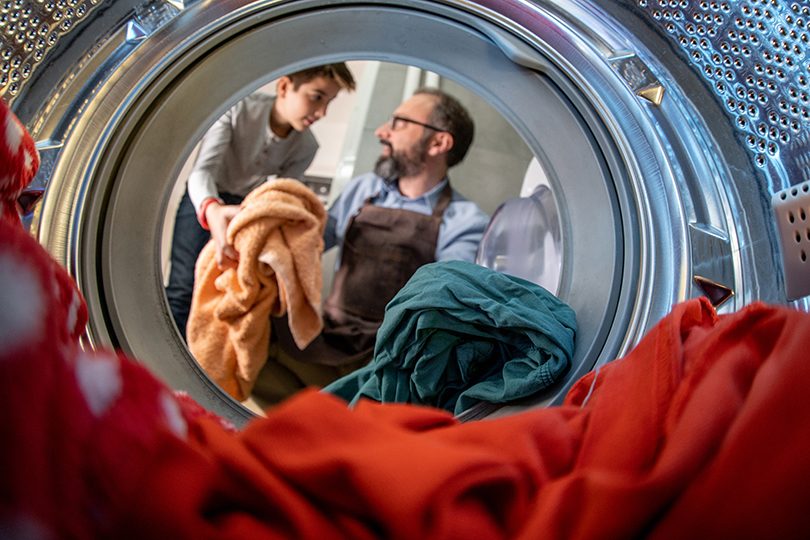
Dishwashers, washing machines and toilets are big water consumers, especially older models. When buying new models, look for those that are more water-efficient. Photo: Supplied.
With almost all of NSW and two-thirds of Queensland in drought, it’s no surprise Canberrans are concerned about the local impact of above-average temperatures and very low rainfall across the country.
This may be particularly true for those who lived in Canberra during the Millennium Drought (2001 to 2009), which led to tough water restrictions and acted as the catalyst for significantly expanding Canberra’s water storage capacity.
In this article, we’ll take a closer look at how the drought will affect Canberrans and provide practical tips for saving water at home and at work.
Are water restrictions in place in Canberra?
There are no water restrictions in Canberra at present (December 2019). According to Icon Water, Canberra’s four dams are about 50 per cent full, so water restrictions aren’t yet necessary.
Canberra has about 35 per cent more water storage than in previous droughts as a result of enlarging the Cotter Dam in 2013. This means water restrictions are less likely to be needed.
Canberra has also had permanent water conservation measures in place since 2010. They are rules that we always have to follow, and are similar to level one water restrictions in other parts of Australia. They include limiting the use of sprinklers to before 9:00 am and after 6:00 pm in warmer months, and using a trigger nozzle on hoses.
Water restrictions should really be called ‘temporary water restrictions’ as they are put in place only when we need them most. If Canberra is in temporary water restrictions and it rains a lot, the restrictions are lifted and we move back into permanent water conservation measures.
Water-saving tips for the home
When it comes to saving water at home, there are a few obvious things you can do.
For example, you can take shorter showers, run the dishwasher and washing machine only when there’s a full load, and you should turn off the tap when brushing your teeth,
But did you know that there are lots of other ways to reduce water consumption in your home that won’t drastically affect your lifestyle? Easy steps you can take include:
- Identify and fix leaking taps and toilets. A continuously running toilet can waste up to 96,000 litres of water a year.
- Switch to modern, water-efficient shower heads. A water-efficient showerhead can halve the amount of water you use in the shower (9 litres per minute, as opposed to 20 litres for older models).
- Check that your hot water system thermostat is not set too high. Adding cold water to very hot water to bring the temperature down is a waste of water.
- Upgrade to water-efficient appliances. Dishwashers, washing machines and toilets are big water consumers, especially older models. When buying new models, look for those that are water-efficient.
- Catch running water while waiting for it to heat up. Put a bucket in your shower or sink to collect cold running water before it heats up, and use it to water plants.
Water-saving tips for the garden
If you pride yourself on having a lush, green garden, you might not be surprised to learn that outdoor water use accounts for between 25 and 50 per cent of the average home’s water consumption.
The good news, however, is that you don’t necessarily need to trade your well-manicured lawn for brown patchy grass to save water.
Here are five ways to reduce your outdoor water use:
- Water at the right time of day. In summer, it’s better to water at dawn before the day heats up. If you wait until it’s hotter, you risk losing water to evaporation.
- Check that your plants are thirsty. Plants are often overwatered, even in the warmer months. Before you get out the watering can or hose, stick your finger into the soil. If it’s moist below the surface, you don’t need to water.
- Change your mowing practices. If you cut your lawn too frequently, or too low, it will need more water to stay green. Avoid cutting your lawn by more than a third of the grass length.
- Use mulch. Mulch can reduce evaporation from the soil by up to 70 per cent. Any kind of mulch is better than no mulch at all, especially when it comes to locking in water, maintaining a consistent soil temperature and reducing weeds.
- Install a rainwater tank. Water collected in rainwater tanks is a great way to keep your garden looking great in drier times. You can even have a tank connected to indoor plumbing for your toilet and laundry.
Water-saving tips for businesses
Industries like hospitality, agriculture and commercial laundering use large amounts of water. But there are still plenty of ways to cut back on water usage, reduce wastage and save money in the process.
- Understand how your business uses water. Find out which parts of your business use the most water, and prioritise reducing water use in the most water-hungry areas. In a hotel, for example, guest rooms typically use more water than the kitchen and pool, so it may be worth investing in water-saving measures like water-efficient showers and taps.
- Optimise irrigation systems. Overwatering is bad for plants and for water use. If you have to use an irrigation system, make sure it is designed and managed in a way that uses water efficiently. Using mulch on plants can also reduce the amount of irrigation required.
- Upgrade watering devices. Use watering equipment with automatic shut-off devices, or install flow restrictors to minimise water wastage.
- Sweep instead of hosing. Where possible, sweep down surfaces rather than hosing or mopping. If you do need to hose, a high-pressure nozzle may clean more effectively while using less water.
- Consider recycling water. Depending on your industry, you may be able to recycle water, such as by collecting run-off from watering plants in a nursery, which means you use less water overall.
Where to find more information about water restrictions in Canberra
Reducing Canberra’s water use is possible, but it will take the work of our whole community. For more water-saving advice and information about water restrictions in Canberra, visit the Icon Water website.












